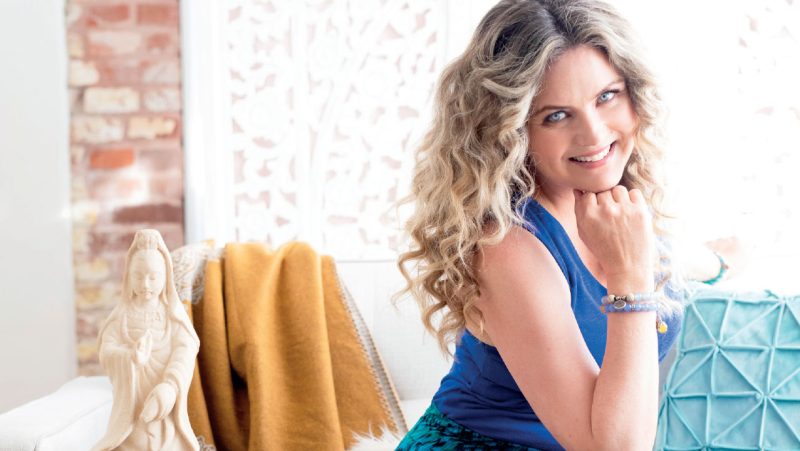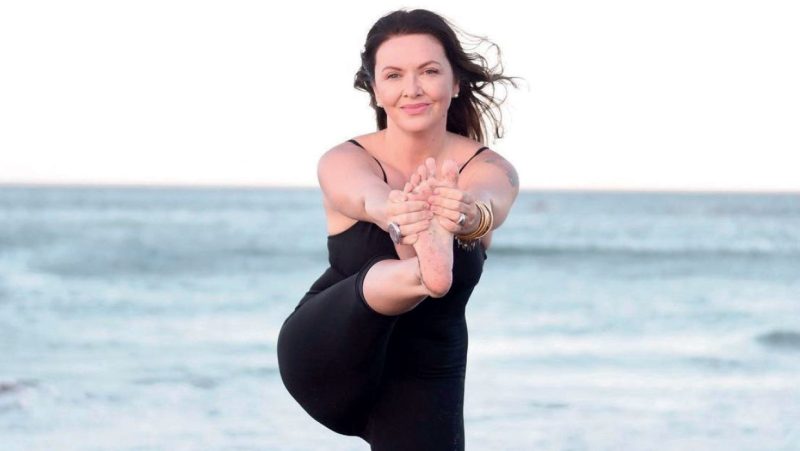
Do Your Hip Flexors Have a Love Language?
A Massage Therapist and Yoga Teacher aims to heal our troubled relationship with our hips with 3 yoga poses to strengthen and stabilize - By Rachel McDonnell
Reading time: 5 minutes
Your tight hips are trying to tell you what they need but you haven't been listening. Maybe I can help.
What if intentional and thoughtful movement in the form of yoga was your body's love language?
I've been a Registered Massage Therapist for 19 years, and just recently became a Registered Yoga Teacher, specializing in therapeutic yoga. Sometimes I feel like a marriage counsellor between my patients and their bodies. I'm not always sure I can make the 2 of them fall back in love, the divide being so great and the misunderstandings so common. When I'm working with a body, I use my hands to listen to what it has to say and what it needs, despite what the person has told me. Sometimes the body whispers, but sometimes it screams. Quite often the body part talking to me the most are the hip flexor muscles.
Everyone thinks their hips are tight. Everyone. That's why hip opening poses dominate yoga classes and social media. Hip flexors are powerful, critical, and occasionally mysterious given their location in the body. Like an organism dwelling deep in the ocean, they lie slightly misunderstood in the darkness... only in this case under many layers of abdominal tissue.
Time to shine some light on them.
So... what do hip flexors do and where are they? Essentially we are talking about the muscles that bring the knee up and forward to the chest, such as movements like high knee warm-ups for running, high kicks in martial arts, track or track and field events (hurdlers I see you), and simply walking around everyday. Hip flexors cross from your low back to the inside of your pelvis to the top of the femur. When contracted they bring these structures together at the front of the body.
Time and time again patients end up at massage or yoga because they have a desk or a driving job that requires long hours of sitting and they feel their hip flexors are "tight" from being in this partially flexed position. And, yes, sitting for many hours a day can make the hip flexors feel "scrunched" as they are not called on for any great active movement in this shortened position.
The grandaddy hip flexor of them all, and the muscle I find people talk most about, is called Iliopsoas. It's really 2 muscles. The Psoas originates on your lumbar spine in the low back before it begins its journey to join the Iliacus muscle on the inside of your pelvis, so you get a strong combination of muscles crossing the hip before inserting on the femur. One of the Psoas' most important functions is to stabilize your low back while you're sitting, a job that's often overlooked. So while we need these muscles to be flexible for sure, we also really need them to be strong.
A muscle may be shortened, but is it really tight? A question for the ages. And remember, if your complaint is too much sitting, and NOT too much hurdling, or mountain climbing, or kicking a ball, then tightness may not be your only issue. Weakness probably is.
So you stand up at the end of your day spent sitting, and no wonder your hips ache! You head to yoga for some juicy hip openers (I vow to never repeat this phrase again after this) thinking surely that's the answer. It's possible though that there's more to the story.
Or, as in most relationships, 2 sides to the story.
Time to question... what if constant muscle release is not what your body is trying to say it needs? What if it's trying to tell you it wants flexible and strong hip flexors? That muscles in general want intentional movement and consideration.
Think about adding more strength asanas to your practice and see how you feel overtime.
Here are 3 yoga poses that can start to fire up the love affair once again between you and your hips.
1.Staff Pose- Dandasana. With block
Begin seated with your legs out in front of you on the mat. Arms straight and by your sides. Place a block to the outside of your right foot on its lowest setting.
Flex your ankles, draw the toes towards the face while at the same time pushing away with the soles of your feet.
Rotate the thighs in slightly and gently press your femur bones to the mat to start to engage the leg muscles. Gently draw your belly button to your spine to engage the core.
Lift the heart. Soften the face and jaw muscles. 5 breaths here.
Keep your right leg straight and lift it up and over the block to the right. Place the leg back down on the mat. The movement won't be too big or too high. Lift the right foot back over the block to the starting position. 3 more times on the right side. Come back to Staff Pose for a breath then repeat 4 times with the block to the outside of the left foot. Lift your straight left leg over the block and back Over time you can play with the block on a higher setting for an extra challenge.
2. Boat Pose- Paripurna Navasana
So many benefits to this pose. not just for the hip flexors and core but for your groin and low back muscles.
Sit on the floor with your legs out in front of you. Place your arms by your sides, palms of the hand slightly behind your hips.
Firm your core, and lean back slightly so you feel the connection of your sit bones and sacrum to the mat.
Bend your knees and start to lift them up in front of you as you ever so slightly tip back and balance on the mat. Start to straighten the legs to about 45 degrees if this available to you and bring the tips of the toes up above your gaze. It's ok to keep a bend in the knee if that's more comfortable.
Raise the arms up in front of you alongside your legs. Palms facing in. Find your inner focus and strength. Keep the belly firm but not rigid. 3-5 breaths here. Slowly lower back to the mat.
3. Plank P0se- Kumbbhakasana. With mountain climber marches
Lie face down on the mat, propped up on your elbows, legs straight out behind you.
Draw your belly button to your spine to protect your back and find your strong core. Lift the hips and knees off the floor and come into your plank pose with elbows in line with the shoulders. Straight a board. Engaged through the legs. Gaze slightly down at the mat to protect your neck.
Bring one knee at a time slowly to your chest. That's the mountain climber movement. Alternate each leg 5 times. Stay strong in your plank as you walk in the mountain climber marches, don't run them in. When you're done come back to your plank and slowly lower to the mat.
These 3 hip flexor poses can be incorporated into a warm-up, a flow or a Hatha style class.
Please see a health care provider before you begin any exercises that are new to you and always listen to your body.
It may be trying to tell you something.





